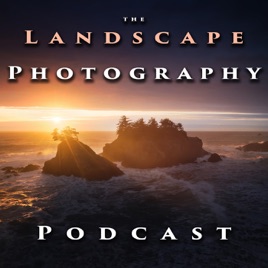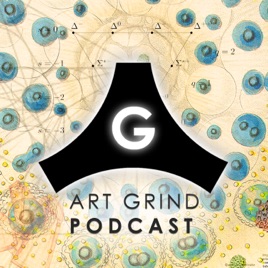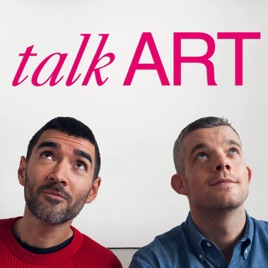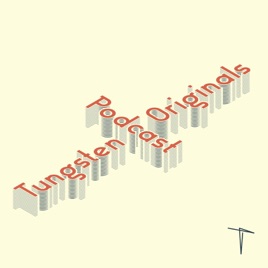
Advertise on podcast: The Art Angle
Rating
4.7 from
Country
This podcast has
237 episodes
Language
Publisher
Explicit
No
Date created
2019/10/22
Average duration
43 min.
Release period
7 days
Description
A weekly podcast that brings the biggest stories in the art world down to earth. Go inside the newsroom of the art industry's most-read media outlet, Artnet News, for an in-depth view of what matters most in museums, the market, and much more.
Podcast episodes
Check latest episodes from The Art Angle podcast
The Roots of the Harlem Renaissance—and Its Power Today
2024/02/22
The words the “Harlem Renaissance” have immense magnetism for vast numbers of people. In art history, however, the Harlem Renaissance has often been treated as a footnote to the main story of 20th century art. It’s often been given scant attention in textbooks, and even U.S. museums have historically given more attention to European movements of the 1920s, such as French Surrealism and Russian Constructivism, than to what was happening with Black artists in their own cities.
A new exhibition at the Metropolitan Museum of Art, called “The Harlem Renaissance and Transatlantic Modernism,” is out to correct the record. Curated by Denise Murrell, it places the explosion of creativity and experimentation by Black artists from the '20s to the '40s at the center of international art conversation in those years. The 160 works on view range from figures like Aaron Douglas and Jacob Lawrence, whose works have long been celebrated, to a host of less familiar names whose stories are not widely known. There’s so much to say about it.
To get some perspective on what makes this show such a big deal, art critic Ben Davis spoke to Bridget Cooks. Cooks teaches art history and African American studies at the University of California, Irvine, and is the author of Exhibiting Blackness, an important 2011 book about the history of U.S. museums’s relationship to Black artists. Cooks also happens to be one of a star group of experts who was on the Advisory Committee for this Met show. With “The Harlem Renaissance and Transatlantic Modernism” drawing major attention, they talked about both the history of the Harlem Renaissance itself and the history how museums have treated the subject in the past.
more
Inside the Art Fraud Feud of the Century
2024/02/15
Last month, much of the art industry was transfixed on the goings-on in a courtroom in downtown Manhattan, where the Russian businessman Dimitry Rybolovlev and a group of Sotheby’s auction house representatives were taking turns on the witness stand.
The matter at issue was artworks that Rybolovlev had purchased via the Swiss art dealer Yves Bouvier. The Russian accused Sotheby’s of conspiring with Bouvier and defrauding Rybolovlev out of tens of millions of dollars in art sales and Sotheby’s denied any wrongdoing. The works in question are masterpieces, not least of which was Leonardo da Vinci’s Salvator Mundi. That work later made headlines for a totally different reason, when Rybolovlev sold it at Christie’s for $450 million in 2017
Rybolovlev ended up losing his case against the auction house last month, and the verdict is likely the last gasp in a high profile art fraud dispute that has travelled to courtrooms all over the world over the last years. And the Sotheby's trial this January was just part of a wider story that actually tracks back to a time before 2014 when the Russian businessman spent around $2 billion acquiring a world class art, collection of art by the likes of Paul Gaugin, Pablo Picasso and Henri Matisse. His right-hand man in getting him these works was Bouvier. Their relationship soured though when Rybolovlev discovered that Bouvier was marking up the prices. In some cases, Bouvier would speak with Sotheby's to get works evaluated After years of litigation in court actions, the two men eventually settled out of court in December, 2023.
While the details of their settlement are fully confidential, the proceedings with Sotheby's in January have shed light on the secretive world of our business dealings. Artnet’s Senior Editor, Kate Brown spoke about the case with Senior Market spoke with Eileen Kinsella, who has been following this dispute for years, since the very beginning and watched the trial in person last month.
more
The Enduring Obsession With Abstraction
2024/02/08
The term “abstraction” gets thrown around a lot in the art world, usually as a vague catchall to describe an otherwise inexpressible style of painting or sculpture. Just going by the dictionary’s definition, “abstract” is described as being disassociated from any specific instance, or having only intrinsic form with little or no attempt at pictorial representation or narrative content.
Today, abstract art is not in and of itself considered particularly revolutionary, it is just one of many approaches artists take in pursuit of their vision. But this wasn’t always the case, and the history and tradition of abstraction and abstract art is still rather new in comparison to the long stretch of art history. And there is a lot that can still be mined by looking back to the roots of the movement, to learn about what inspired artists' departure from traditional figurative and representational modes of art making—as well as by looking at how the reverberations of early abstraction can still be felt today.
To delve into what abstractionism is, and highlight some of the most important historical practitioners, Artnet's Gallery Editor Annikka Olsen spoke to Artnet’s Co-Head of Post-War and Contemporary Art Martina Batovic, and curator, collector and partner at Leslie Feely Gallery Dakota Sica.
more
Unexpected Ways A.I. Might Rewire Art
2024/02/01
Artificial intelligence was one of the hottest topics in art in 2023—and we can predict that it will continue to be a major topic in 2024. We can debate whether we should be cautiously optimistic or in an existential panic, but most of us can agree that the impact will be enormous.
Way back in May 2022, Art Angle co-pilot, art critic Ben Davis, talked about what A.I. means for art in an episode of the Art Angle in his book, Art in the After-Culture—just when the world was first being transfixed by images generated by Dall-E 2, and before ChatGPT took the world by storm in November 2022. The year and a half after that conversation brought a huge wave of fascinating—if unnerving—developments around the fields of art and creativity—the most human of pursuits.
As we head deeper into 2024, what forms and aesthetics could emerge or take precedence? Recently, Ben put together a new essay, offering 10 speculative predictions about how generative A.I. might transform how art is made, how artists work, and what an audience expects from art. We found them very persuasive. Some are unexpected. Some are alarming. We will have to wait and see if he’s right, but things are moving pretty quickly, so we may not have to wait long.
In a wide-ranging conversation, senior editor Kate Brown and Ben review some of the most memorable touchstones around A.I. and art from last year, before going in depth about a few of Ben’s predictions that jumped out from his article—if you want to read all 10, you can check out the full essay, “10 Predictions About Unexpected Ways A.I. Will Reshape Art (Part 1 of 2) and 10 Predictions About Unexpected Ways A.I. Will Reshape Art (Part 2 of 2).
more
The Art Angle Round Up: Market Predictions, Venice Biennale Shake-Ups, and Marina Abramovic's Skincare
2024/01/25
We are well into 2024 now, coming to the end of January, and looking back at 2023, one of our favorite innovations was this monthly round up here at the Art Angle. Each month, we bring together Artnet News editors and writers to discuss the biggest art news developments of the last month, and take the pulse of what's happening around the world.
This week, we have a fully-international cohort, with Ben Davis in New York, Kate Brown in Berlin, and Jo Lawson-Tancred in London. We also have a very diverse set of talking points today, including performance artist Marina Abramović's new skincare line (which may or may not actually be a work of art in itself); a spate of controversies dogging the national pavilions gearing up for the Venice Biennale; and some predictions from art advisors about what to expect in the art market this year.
more
Ishmael Reed on Basquiat Myths and Realities
2024/01/18
The author Ishmael Reed is known as a major force in literature and has been called one of the key thinkers of multiculturalism. Born in 1938, Reed arrived with a bang in 1972 with Mumbo Jumbo, a vibrant, hard-to-describe novel that blends real historical events with outrageous fantasy, about a plague of dancing that breaks out, spread by Black artists and musicians, and a shadowy international conspiracy to contain its disruptive power.
Reed’s storied career has included novels, essays, and polemics, as well as plays. And he has recently come out with a work for the stage that looks at how we tell the story of another giant of the late 20th century: Jean-Michel Basquiat.
Basquiat is today among the most widely known painters, and his life story is almost as famous as his art itself. He burst into the spotlight in the early ‘80s, first as a savvy street artist and then with his vibrant style of painting. By 1985, he was on the cover of the New York Times Magazine, the symbol of the 1980s art boom. By the end of the decade, he was dead of an overdose of heroin, at the age of 27.
Reed’s play, titled The Slave Who Loved Caviar, is sharply critical of how Basquiat’s story gets told as one of self-destruction instead of exploitation. It homes in on Basquiat’s famous relationship with the edler Andy Warhol, which has been told and retold, in the painter Julian Schnabel’s famous 1996 film Basquiat, as well as more recently Anthony McCarten’s Broadway play, The Collaboration, soon to be a film, and in many other places.
Like Mumbo Jumbo, The Slave Who Loved Caviar tackles the serious subject of how Black culture is treated in society, in a fantastic way. It features police investigators literarily reviewing the evidence that the white art world failed Basquiat. But it also has a Vampire aristocrat character, depicted as a present-day, Andy Warhol-like figure out to collaborate with a young Black artist, who goes by the name Young Blood.
The play was performed in 2021 and 2022 at the Theater for the New City. It has just been published in a text by Archway Editions, with a forward and afterward where Reed responds to some of the criticism his take on Basquiat’s story stirred up then. This week on the podcast, Reed joins Artnet's chief art critic Ben Davis to discuss his work.
more
The Artist Behind the Art World’s Most Viral Memes
2024/01/11
If you like art and are on Instagram, then you probably know the account @freeze_magazine—that's freeze spelled with an E, like "help me, I'm freezing," not with an I, like the popular art magazine and art fair. It's certainly not the first art meme account, but with now more than 160,000 followers, freeze_magazine has gained a particularly large audience by turning the lens of internet humor on the foibles of the art world.
Sometimes it pokes fun at inscrutable art speak, or vents relatable artist insecurities. Other times it uses the meme format to more cutting effect, criticizing the poor treatment of artists and workers who are at the lower rungs of the art world hierarchy. Importantly, in the years since the account blew up, the creator behind it, who goes by Cem A., has done something fairly unlikely. He's made the jump from meme-making to real-world exhibition making, based on his unique Instagram voice.
"If you just have this good guy-bad guy dynamic in a meme, it's not really funny. It's more about creating something in between that shows different aspects" Cem says. "Beyond that, the one function of a meme is to just say, that 'the emperor has no clothes on' when that needs to be said."
Cem has been tapped by high profile institutions, including the Louisiana Museum of Modern Art in Denmark and the Barbican in London to realize IRL projects that toe the line between digital culture, museum outreach, and conceptual art, in clever ways.
Though best-known for a funny and witty internet persona, Cem has some quite serious things to say about what it means to use memes as a venue for criticism, as well as what it means to take memes seriously as a creative form of their own, and the strange evolving relationship between social media and art institutions.
more
Lucy Lippard On A Life In And Out Of Art
2024/01/04
Any short list of the most important art critics of the last decades would have to include Lucy R. Lippard. She would also be at the very top of Artnet's art critic Ben Davis's personal list of favorite writers about art. Lippard has written numerous important books, including Six Years: the Dematerialization of the Art Object from 1973, the book that defined what conceptual art was all about for many; as well as volumes like Mixed Blessings: New Art In a Multicultural America, The Pink Glass Swan: Selected Essays on Feminist Art; and The Lure of the Local: Sense of Place in a Multicentered Society—each helping set the agenda for a different art historical moment.
But Lippard has also been much more than a writer. She curated "Eccentric Abstraction" in 1966, helping to define what would come to be called post-Minimalism in sculpture. Her experimental and traveling card shows helped create the audience for conceptual, minimal, and land art. She curated maybe the first museum show of Second Wave feminist art at the Aldrich Museum in 1971, and was a part of the founding mother-collective behind Heresies, a journal that shaped the field of feminist art history.
Radicalized by sixties activism, she participated in the Art Workers Coalition, a historic activist formation protesting against the Vietnam War and for equality in the museum world. She was part of many, many other collectives and activist groups thereafter, including the Artists Call Against U.S. Intervention in Central America in the early 1980s, a project she discussed with us on the Art Angle back in 2022. Now Lippard has written a new book called Stuff: Instead of a Memoir. It's a short-packed tome that surveys an eventful life through photos that catalog the items Lippard finds around her in the home where she has lived since moving from New York to the small town of Galisteo in rural New Mexico in the early nineties. It's a fitting way to tell the story of a writer who has thought so much about how images and words fit together, and how meaning emerges from place and community.
This week on the podcast, Ben Davis speaks once again to Lucy Lippard about a life in and out of art.
more
Re-Air: What Is Hypersentamentalism? On the New Tendency in Art
2023/12/28
If you follow the mainstream art world, you will know that for the last decade, one of the biggest stories has been a boom in new kinds of figurative painting. A visit to the recent spate of art fairs in New York revealed that this boom is far from slowing down, but nothing stays unchanged forever, and trend-watchers have been scanning the landscape to see what new developments might emerge.
Artnet News’s European editor Kate Brown has an essay out where she brings together a some recent examples to speculate about a possible new wrinkle in the story of contemporary art right now. What’s cool in art right now? The answer might be that what’s cool is painting your cool friends. And the word that Kate uses to describe what she’s seeing is hypersentimentalism.
This is art that trades in knowingly-stylized or lightly-romanticized images of friends and colleagues with a heightened attention to intimate connections, and a veiled but also self-conscious attention to the art scene itself as a subject. In a recent conversation, national art critic Ben Davis joined Kate to hear about where she sees this new trend at play, and even more importantly, what other bigger developments in culture might be causing the drift toward this particular direction.
more
The Art Angle Roundup: 2023's Ins And Outs
2023/12/21
At the end of the year, it's become something of a tradition for people in all corners of the Internet to review the last 12 months and take a look to the future with a sort of "micro-forecast." The original idea of an "Ins and Outs" list began at the Washington Post in the 1970s, and is now a global sensation.
Here at Artnet, we decided to try our hand at a sort of list of our own, and tapped senior editor Kate Brown, national art critic Ben Davis, and columnist Annie Armstrong to weigh in on some of the more polarizing trends that came and went in 2023. Our biggest takeaway? There's not a whole lot of consensus out there, but we did our best. From the state of the art market to the new brand of shoes everyone seems to be wearing in our little corner of the art world, here's our take on the much beloved tradition.
more
Artnet's Writers On The Art That Brings Them Joy
2023/12/14
"Art is something that makes you breathe with a different kind of happiness."
That's a quote from the great Bauhaus textile artist Anni Albers that gets shared a lot, and is especially relevant for this week's episode of the podcast on the subject of art and joy. It's actually a little bit unclear what Albers means when she says that "art is a different kind of happiness," different from what? While many websites and even an art fair have borrowed this turn of phrase, it's difficult to find the original source. But the sort of fuzziness of the origins of the quote is perhaps symbolic of the subject itself. Art and happiness seem obvious enough—art gives people pleasure. People like art, looking at art, being surrounded by art, and talking about art. These things are all part of the definition of a life that is rewarding.
But if you look closer to idea that art is happiness, it becomes more slippery, because most of what is considered important art is actually quite serious. The notion of art = happiness might even sound low-brow to a lot of listeners, conjuring up the PBS painter Bob Ross cooing that there are "no mistakes, only happy accidents." Comedies, too, rarely make the cut when it comes to awards for best picture or lists of all-time great films, and that's because art that takes emotions like fear, loneliness, or anger, and puts them in a form where we are compelled to look at and reckon with them. After all, that is one classical idea of what good art does—the Greek philosopher Aristotle's idea of art as catharsis. Or maybe the idea of happiness in art is considered lowbrow because it's corrupted by commerce.
Getting back to that Anni Albers quote, it turns out to be from a 1968 interview with the artist for the Smithsonian's Archive of American Art, in which she's being asked about the value of craft. She says that she thinks that a lot of the late abstract expressionist painters, the people working in the style that had dominated U.S. art at that time, were trying too hard to go for psychodrama and seriousness. She said: "there's this too-conscious searching of your soul, which very often just turns into this kind of intestinal painting." But that's what Albers is drawing a contrast to, when she says in her full quote: "I have this very, what you call today, square idea, that art is something that makes you breathe with a different kind of happiness. The focus on angst as importance can distract from the pleasures that make art fundamentally valuable." She adds, "I find art is something that gives you something that you need for your life."
That's a simple definition, but it means that the kind of happiness Albers is talking about isn't necessarily about art that just shows you happy things, obviously, though it can be that too. It can just be the happiness of an idea, finding its exact right form.
This week on the podcast, we're doing something experimental. Artnet News is an art website, and we cover a lot of the stories around the controversies and personalities within the art-world writ large, and the art news is almost always by way of definition, about heavy matters. So as we wrap up this year and look to the next, we asked some of our writers to take some time from their busy work days and tell us about a specific piece of art that delights them.
Artworks:
Philip Dawe, The Macaroni, a real character of the late masquerade (1773)
Edouard Manet, The Balcony (1868–69)
Albert Edelfelt, Boys Playing on the Shore (Children Playing on the shore) (1884)
William Holman Hunt, The Light of the World (1900–04)
Kano Masanobu, Bodhidarma in Red Robes (late 15th century)
Gustav Klimt, The Black Feather Hat (1910)
Tatsuo Miyajima, Painting of Change (2020)
Pipilotti Rist, Ever Is Over All (1997)
Florine Stettheimer, The Cathedrals of Art (1942)
more
Klaus Biesenbach on Museums as Social Networks
2023/12/07
Most loyal Art Angle followers will be familiar with the curator Klaus Biesenbach. The German-born artist made his mark in Berlin in the 1990s, founding the city's biennale and one of its most-beloved art institutions, Kunst-Werke. He moved West, across the water, becoming director of MoMA PS1, and chief curator at the Museum of Modern Art in New York, before moving even further west in 2021 to take up a directorship at MOCA, Los Angeles. Biesenbach gained a reputation for leveraging the power of celebrity, working with artists and stars like Marina Abramovic and art-adjacent creatives like Patti Smith and Bjork; he is known for creating and capturing social moments while also rethinking the social nature of museums.
Now, he’s back home in Germany, heading up not just one, but two of the country’s most important museum projects, in a post he called “once-in-a-life-time honor.” One museum is a highly symbolic historical treasure, the Neue Nationalgalerie in Berlin, which was designed by Mies van der Rohe. The other, is a museum still to come, the massive Berlin Modern, which is set to open next door to the Neue Nationalgalerie in 2026.
Artnet News's Berlin-based senior editor Kate Brown checked in with Biesenbach just as he was closing a major retrospective dedicated to Isa Genzken and while the foundation is being laid at the Berlin Modern.
more
Podcast reviews
Read The Art Angle podcast reviews
s capone
2024/01/27
One of the best art podcasts
The Art Angle is one of my top favorite artworld podcasts. It’s a great blend of critical commentary and lighter-side musings; as the tagline accurate...
more
Dill BeBasio
2024/02/22
Soupy Woke
Woke Jokey
Ren Annette
2024/01/07
Loved hearing about joy
Thank you for the pod about art that brings you joy. Interesting and uplifting. Made me think of the joy of Francesca DiMattio teapots, maybe circa 20...
more
Daniel Sterno
2023/12/30
Perfect balance of art smart and entertaining
Always well done, perfect length, entertaining and informative- and the 12/28 episode is especially enjoyable. happy New Year.
Nate-M-Seattle
2023/12/05
Thoroughly enjoy this pod!
Ben, Kate, and Eileen’s discussions are informative and fun.
Ljh66
2023/12/22
Year End Wrap Up was a Missed Opportunity
Where’s the discussion about best shows of the year? Best new artists? So much irrelevant meandering about boots, neighborhoods, where people are livi...
more
urlyturtle
2023/11/05
Helen Molesworth with Taylor Dafoe
Great, candid interview/conversation with Helen Molesworth and Taylor Dafoe. Had to stop what I was doing and fully listen. Looking forward to the rel...
more
amp_gorky
2023/11/25
Ben Davis has an extraordinary mind, to be sure
I remember the first time I heard Ben Davis give a lecture (online, not in person); I was an immediate convert. He feels like more of a philosopher t...
more
Robert-gustvo
2023/10/08
The Art Angle
Brilliant show! I look forward to every episode . I may not like the content but I do listen.
Ben Davis opens topics we need to see and hear. Great, c...
more
Taylor_MilanArt
2023/08/12
An art gem 💎
Hey art lovers! "The Art Angle" is your go-to if you're after some juicy art tales. From overlooked artists to the wild world of A.I. art, the Artnet ...
more
Podcast sponsorship advertising
Start advertising on The Art Angle & sponsor relevant audience podcasts
You may also like these visual arts Podcasts

4.9
26
21
Inspired Design
Larj Media

5
5
52
Reel Talk Arkansas
Arkansas Cinema Society

4.8
379
71
The Landscape Photography Podcast
Nick Page

5
108
29
The Contact Sheet
Kyle McDougall

4.6
156
111
Art Grind Podcast
Dina Brodsky, Marshall Jones, Sophia Kayafas and Tun Myaing

4.7
440
286
Talk Art
Russell Tovey and Robert Diament

4.9
209
50
Artist/Mother Podcast
Kaylan Buteyn

4.9
66
82
Burning Man LIVE
Burning Man Project

4.7
233
237
The Art Angle
Artnet News

4.9
39
81
Tungsten Originals Podcast
Tungsten Originals



